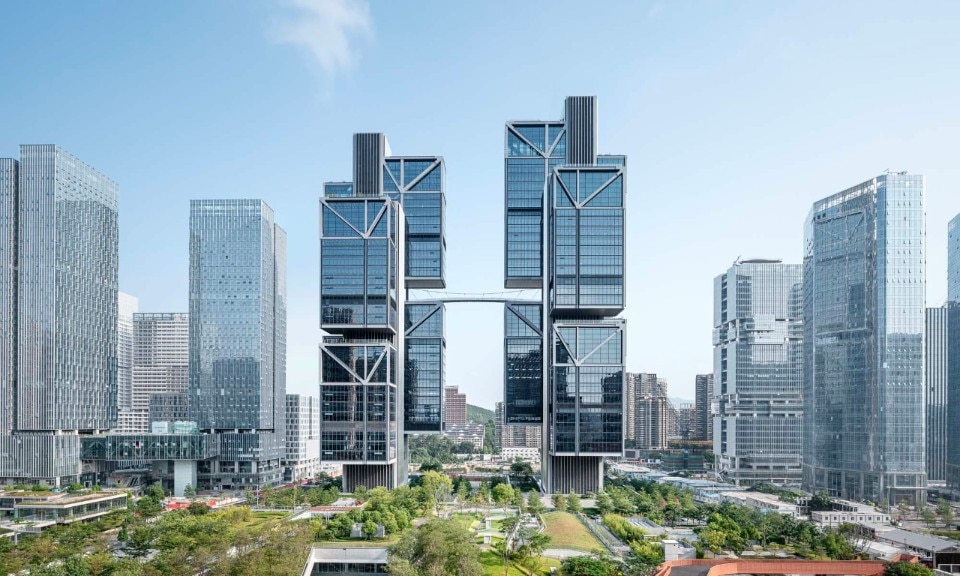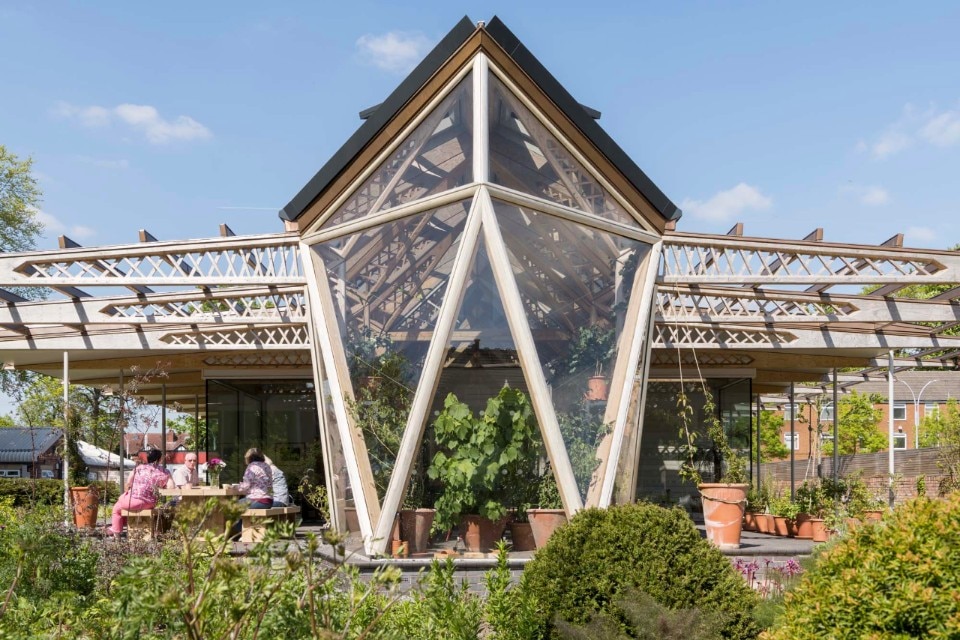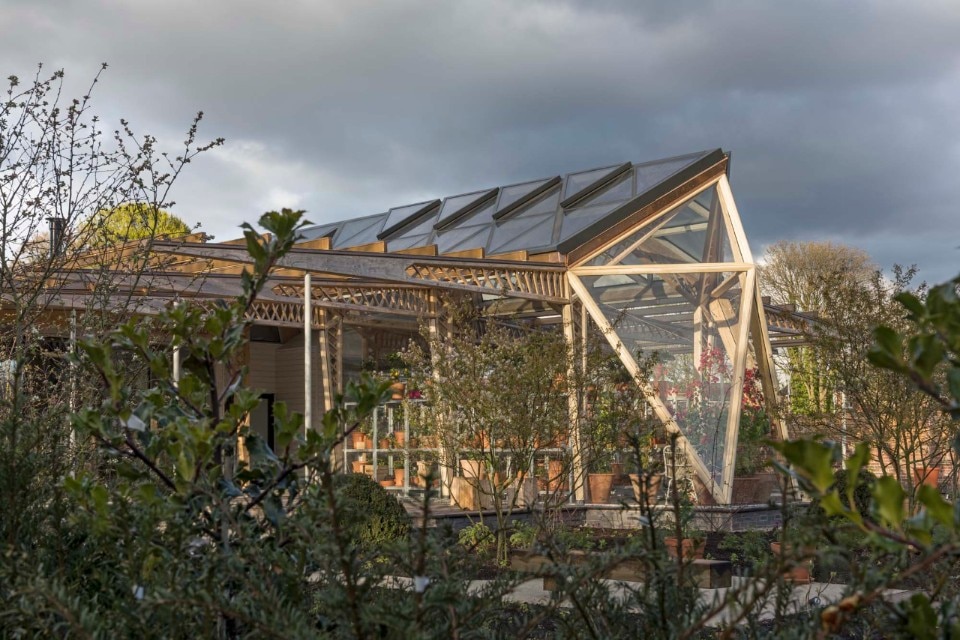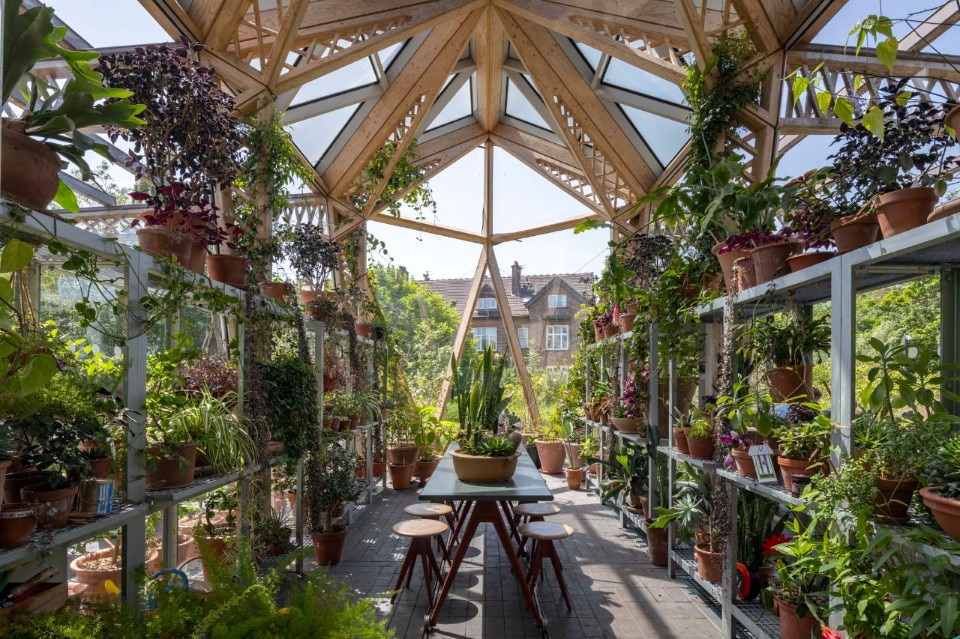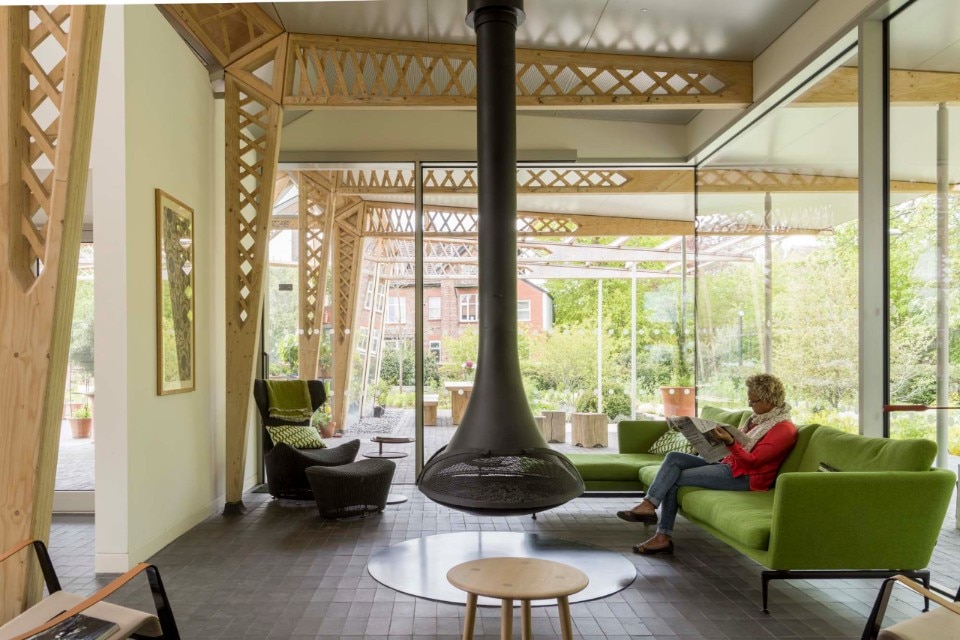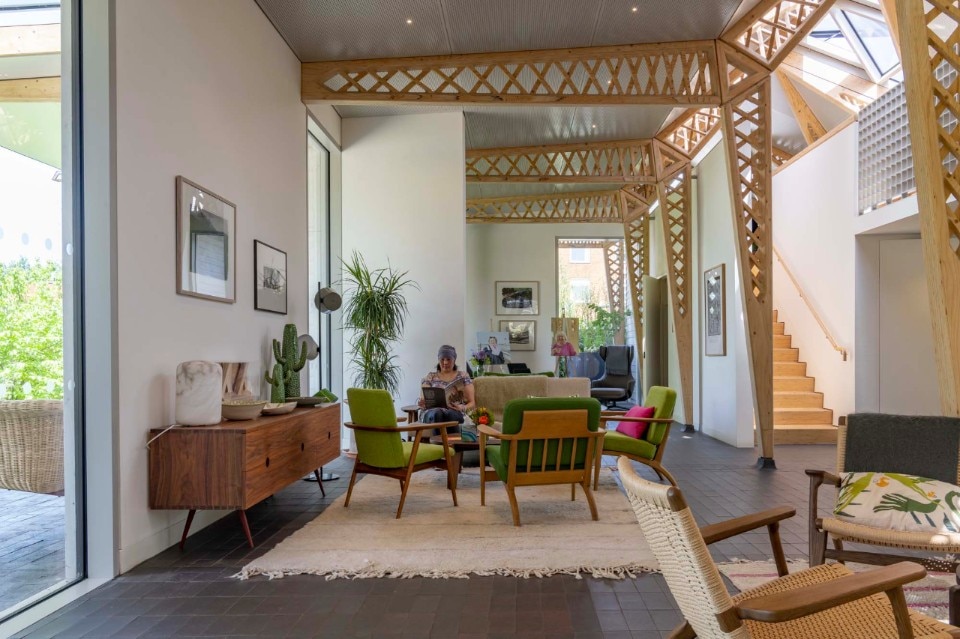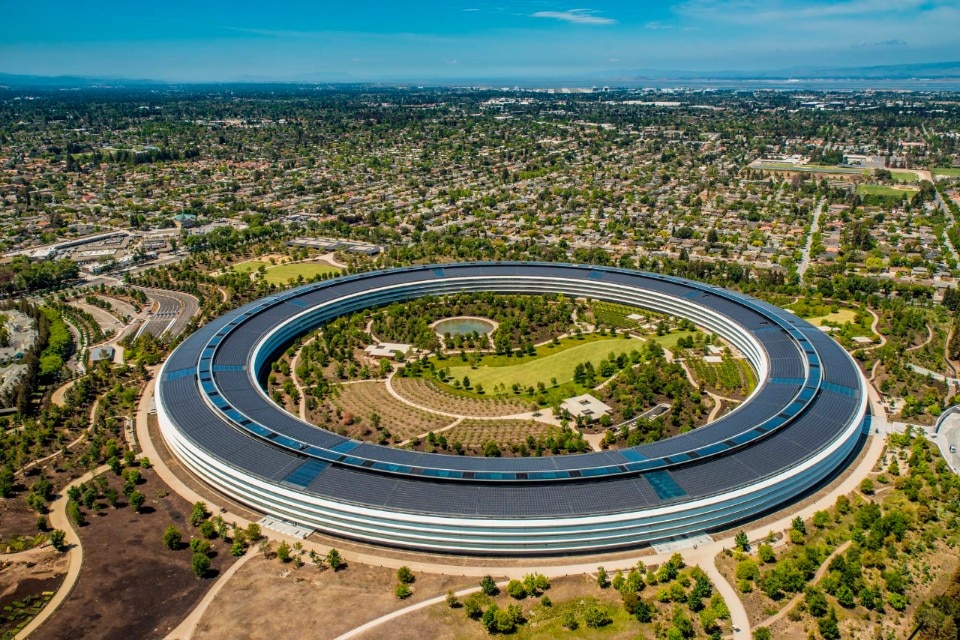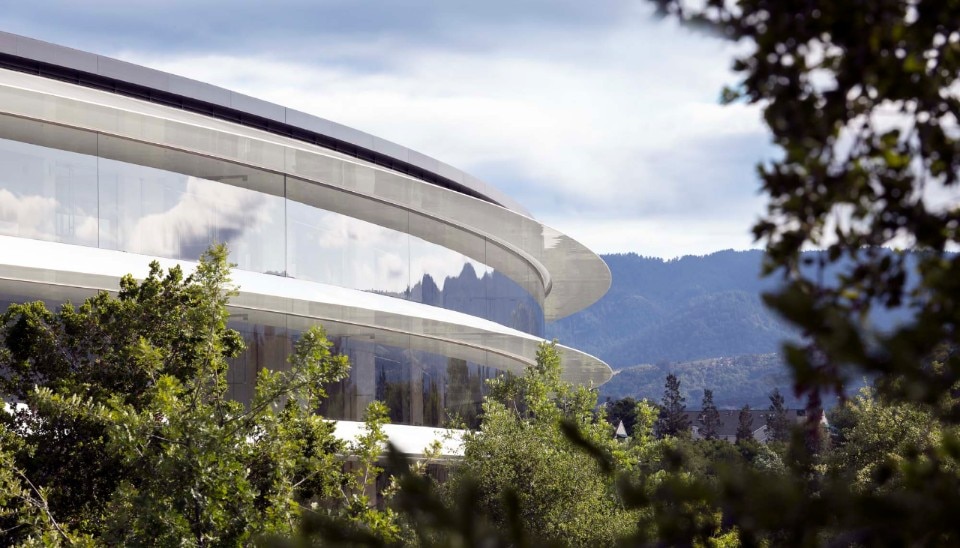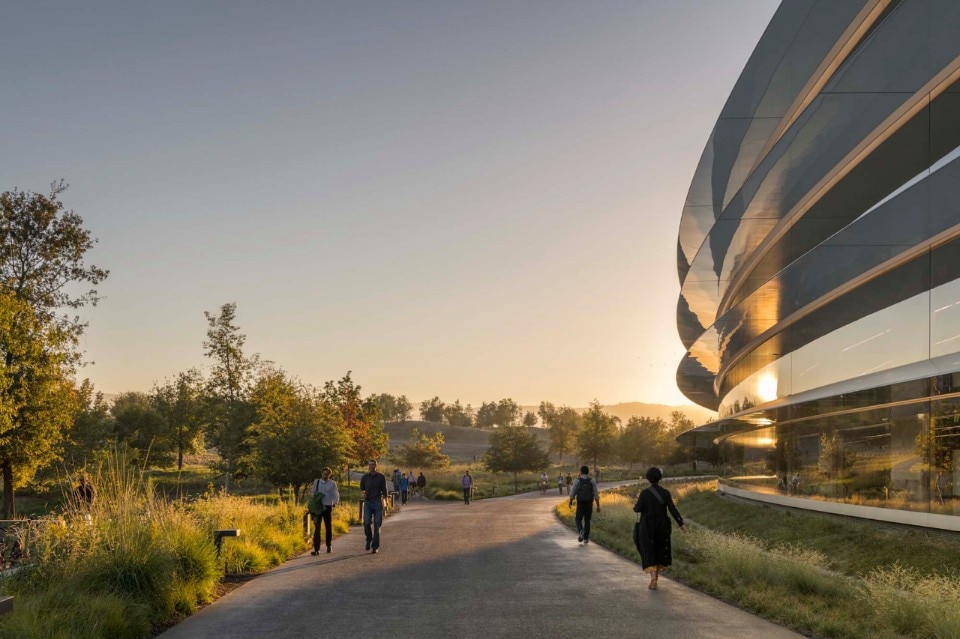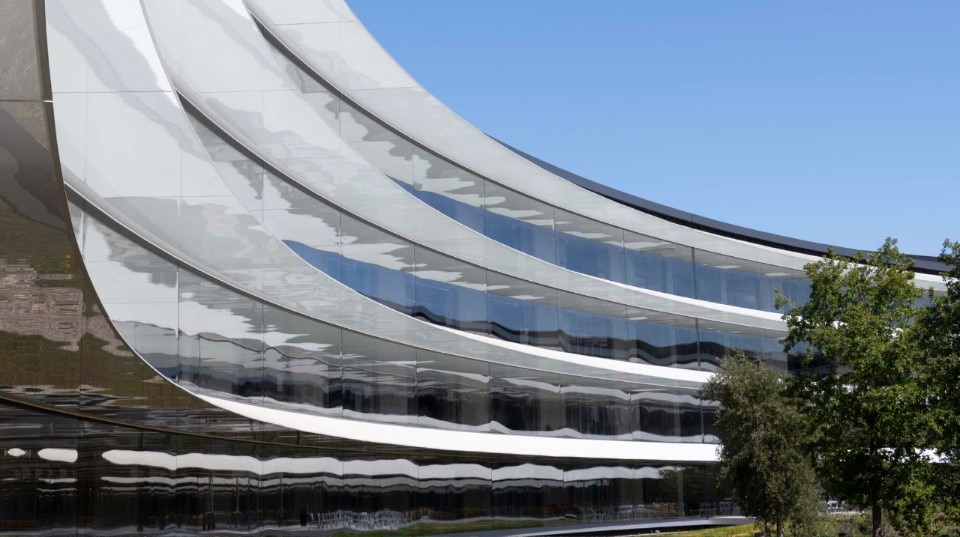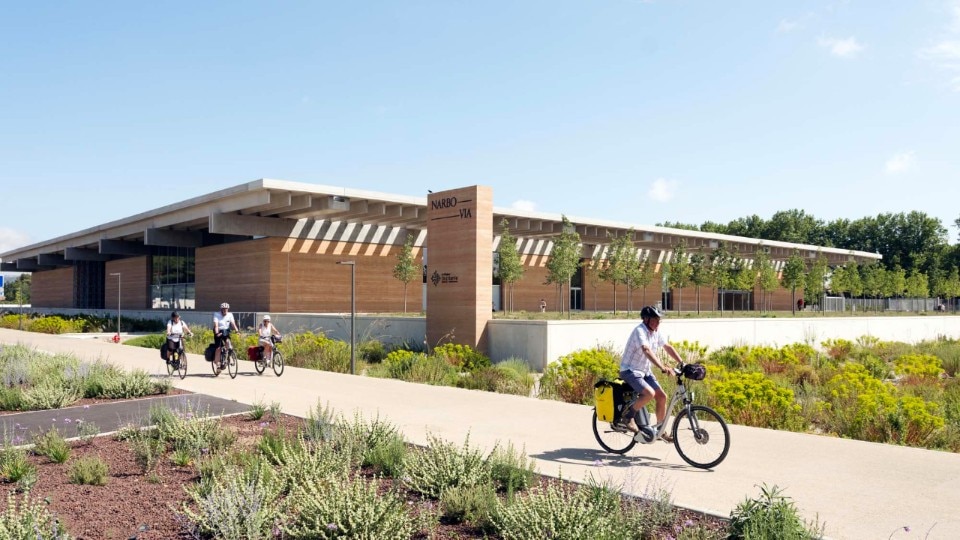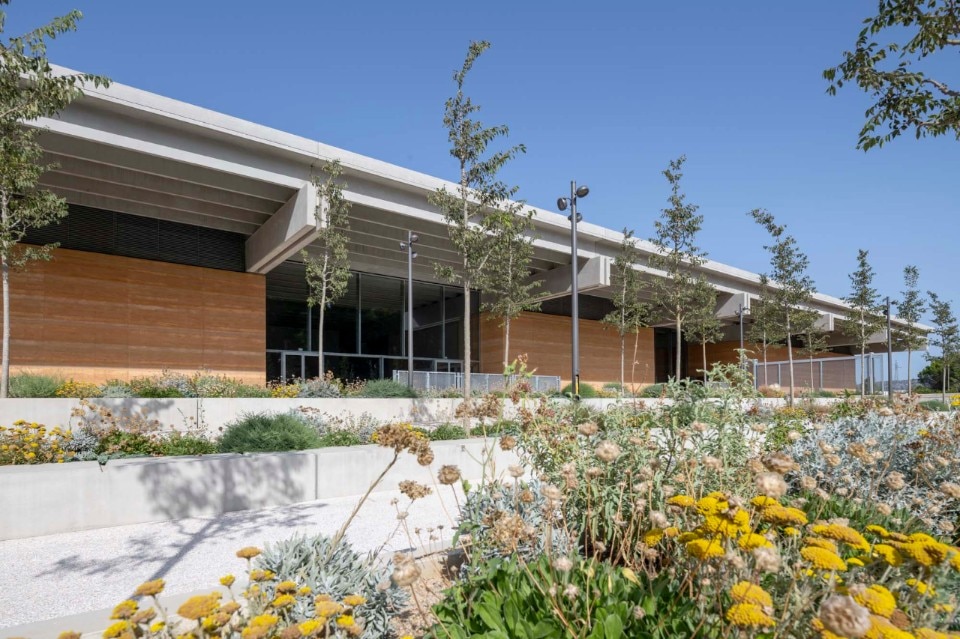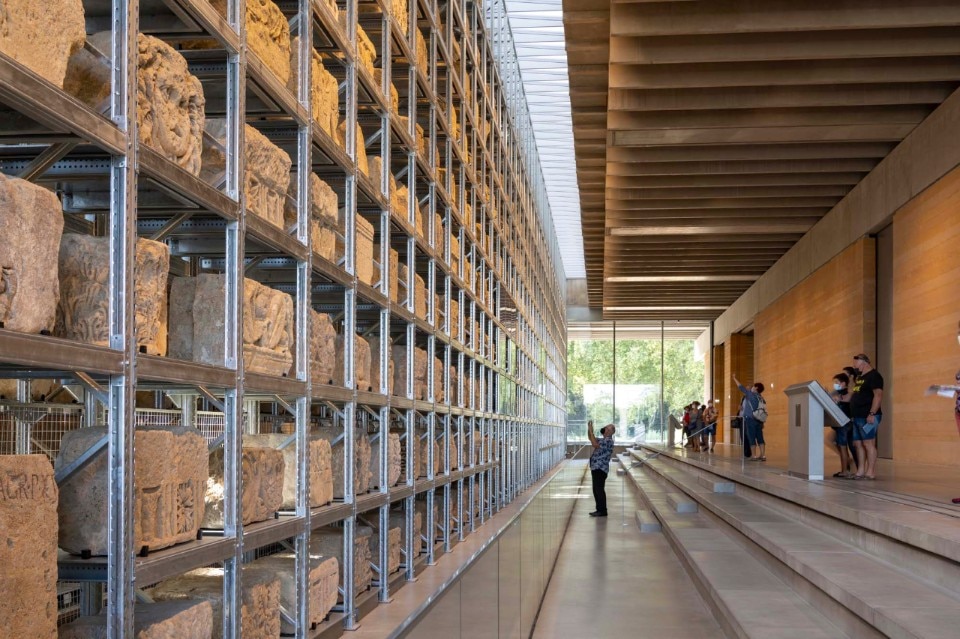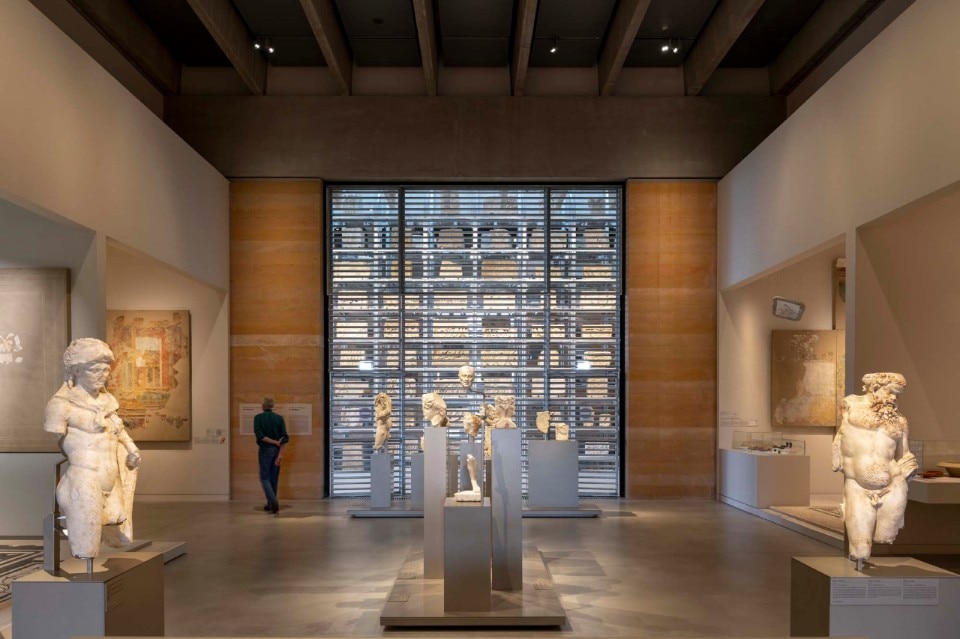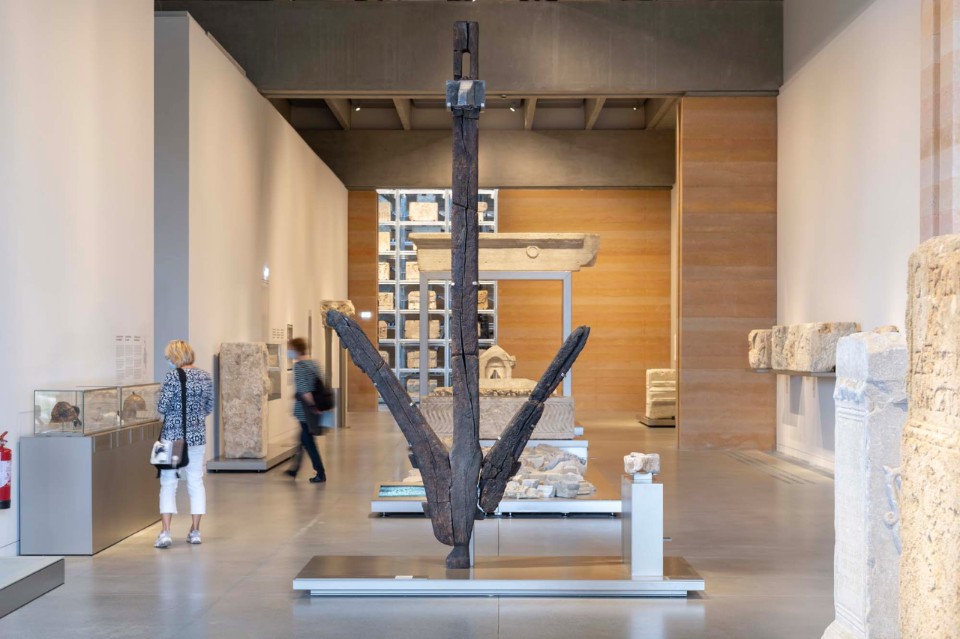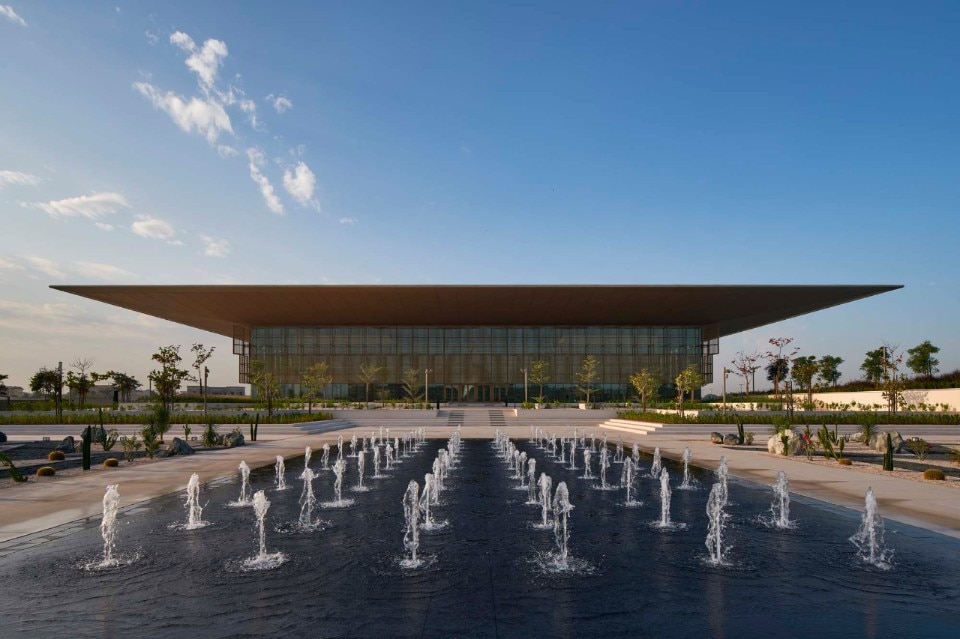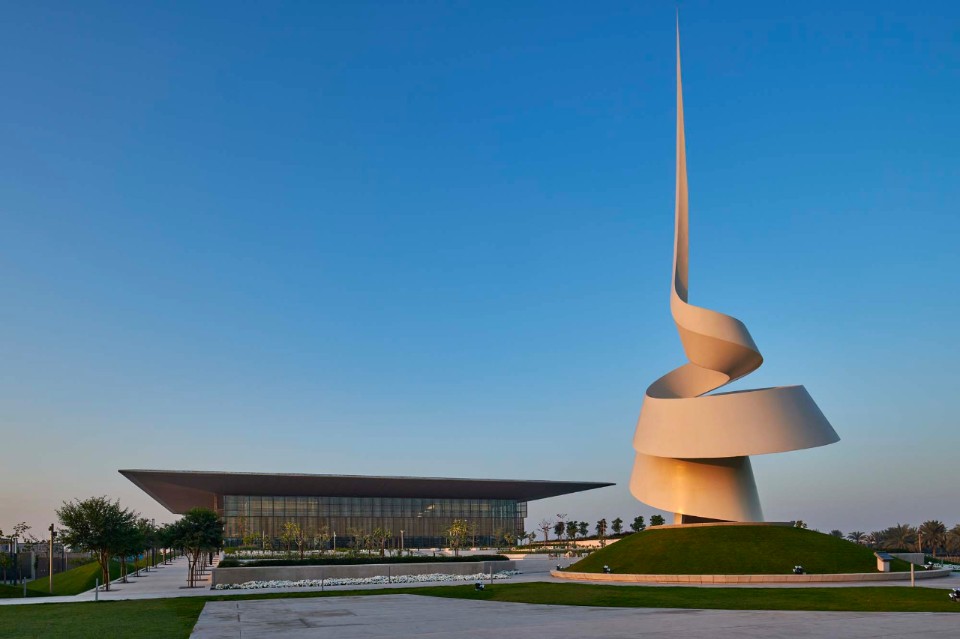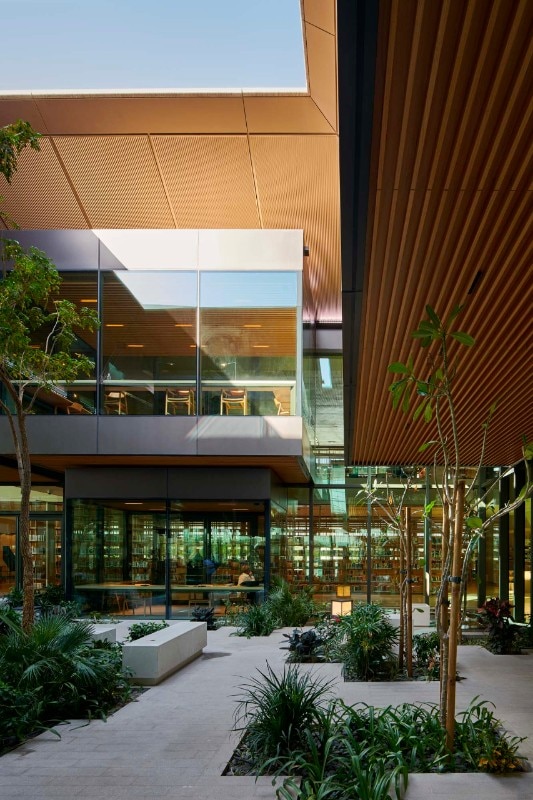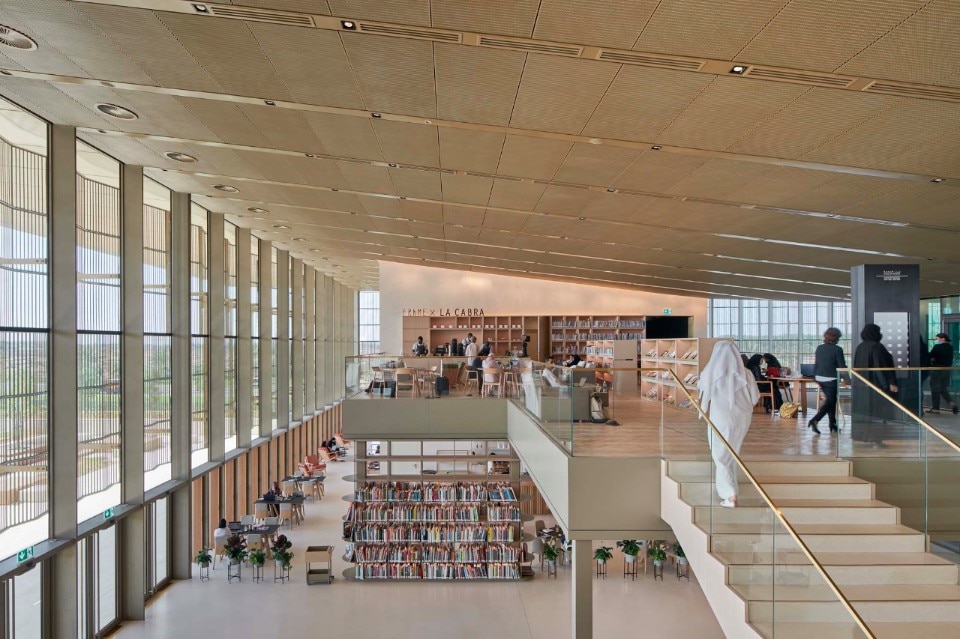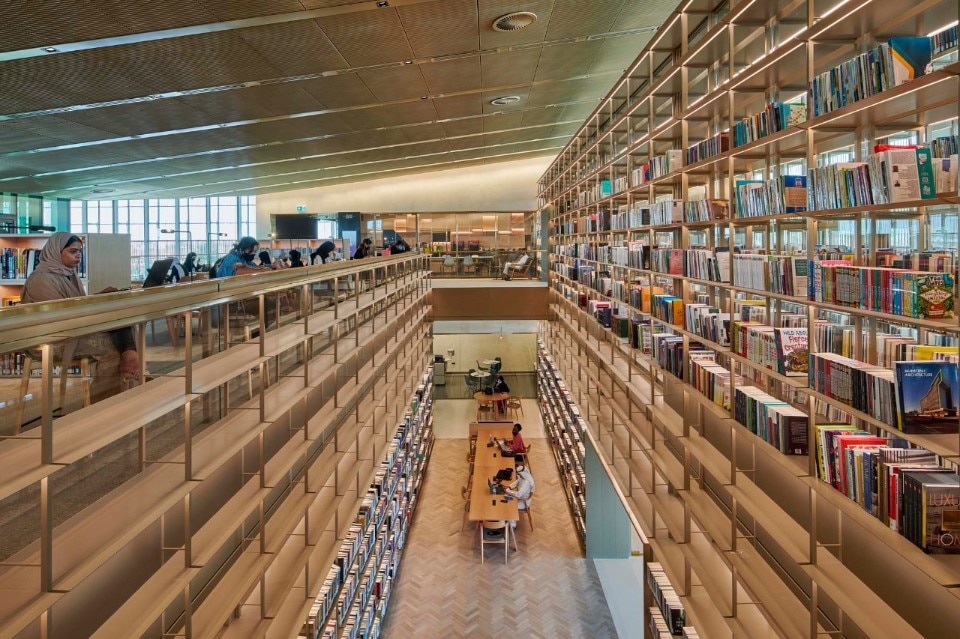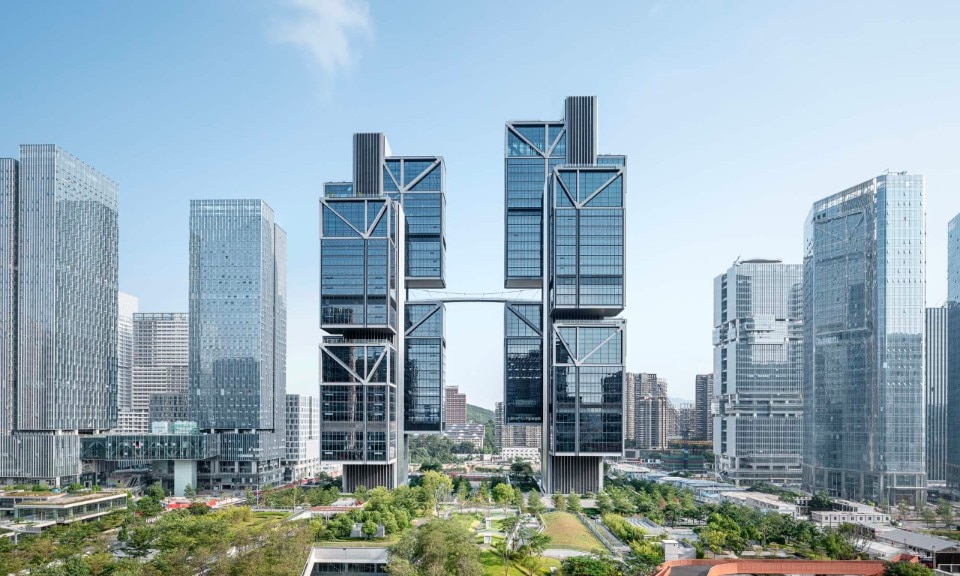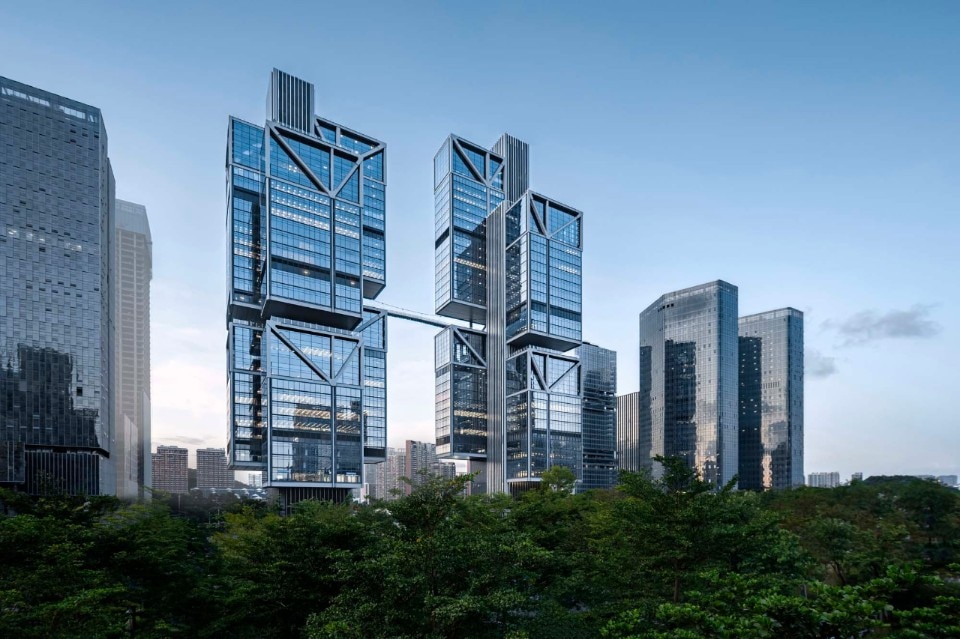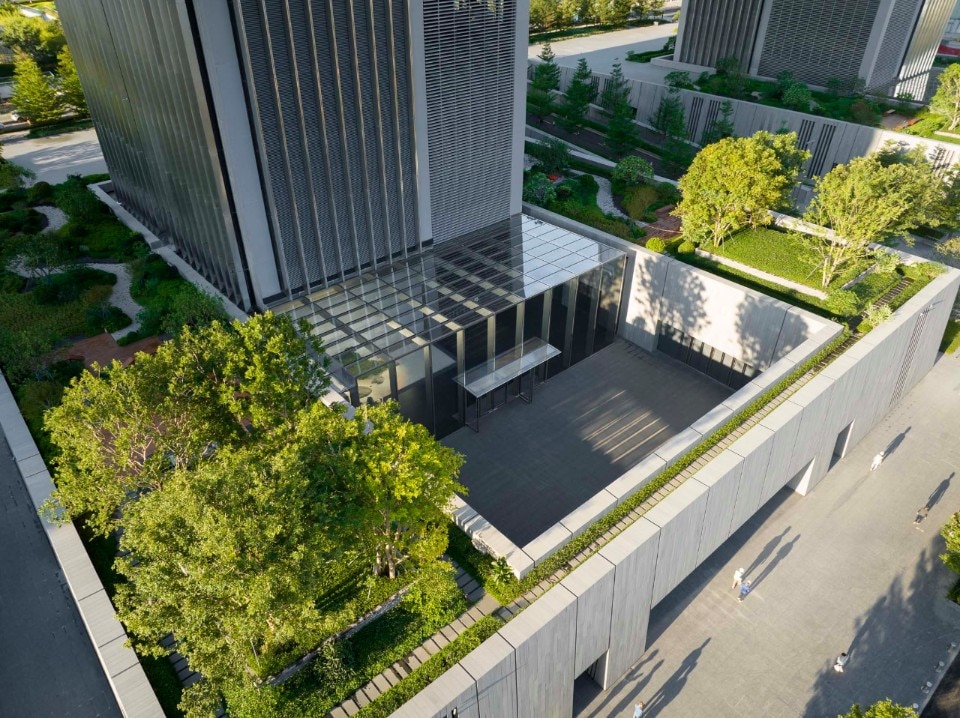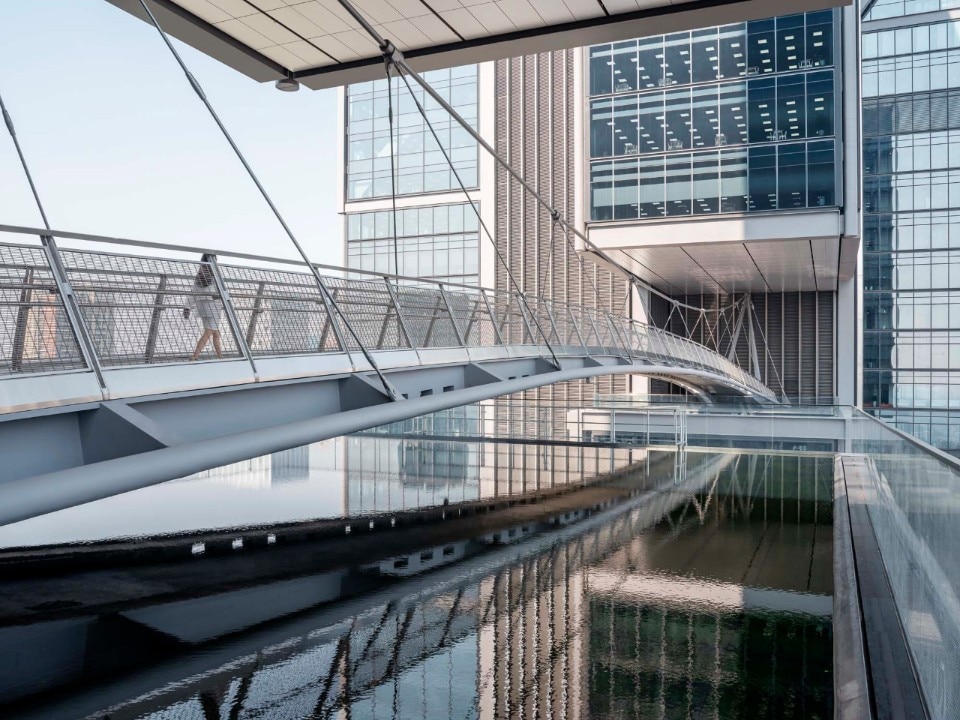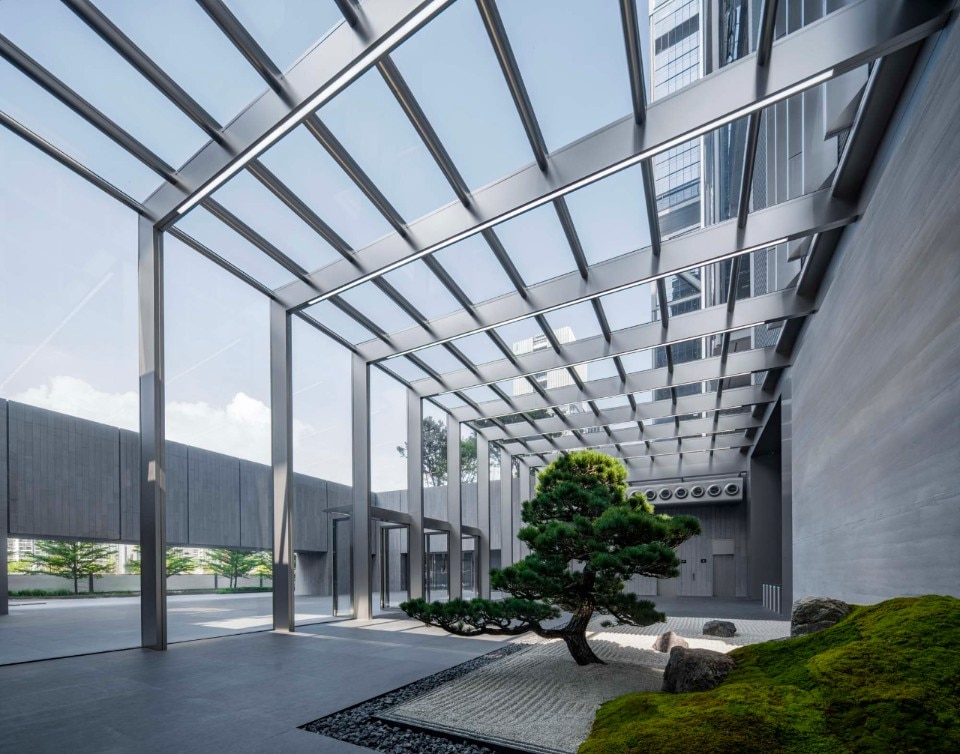Lord Norman Foster is at the Head of Domus as Guest Editor for 2024, the seventh within the project "10 x 10 x 10 - ten architects, for ten issues, for ten years" which leads up to the magazine's centenary, in 2028, and which in past years featured Michele De Lucchi, Winy Maas, David Chipperfield, Tadao Ando, Jean Nouvel, Steven Holl and Toshiko Mori.
We propose here five recent works, testifying to a lucidity and intensity of thought matured over a career spanning sixty years, which address the great themes of the future with the enthusiasm and optimistic confidence that have always distinguished Foster's work: from healthcare (Maggie's centre), to culture (Narbo Via, House of Wisdom), to work (Apple Park, DJI Sky City). Always with an obsession for environmental sustainability and people's well-being.
Maggie’s Centre
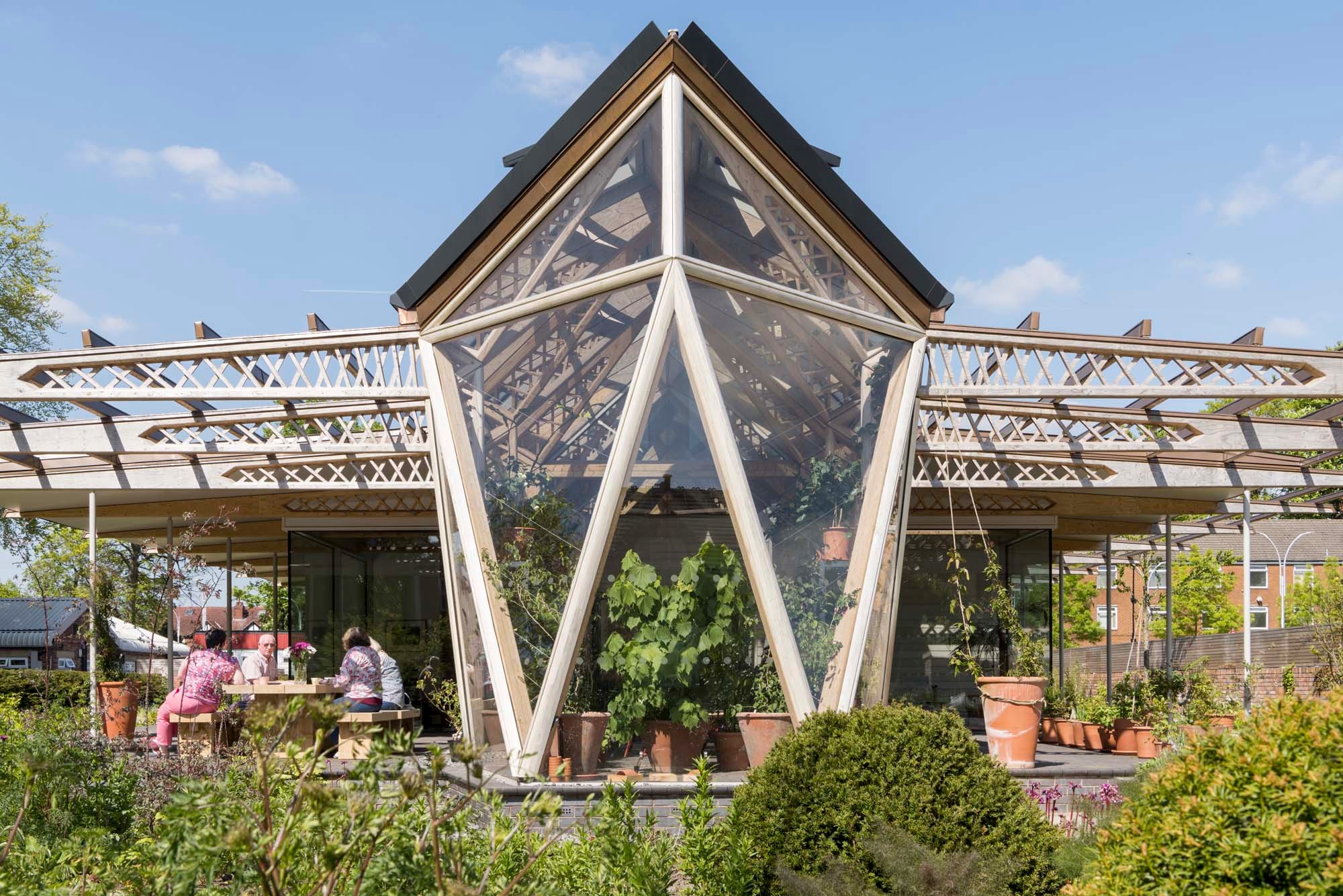
Maggie's centre is a network of centres, located in the surroundings of hospitals, which aim to offer a welcoming environment and material and psychological support to cancer patients, without any intention to replace conventional therapies. Starting with the first centre in Edinburgh, created on the initiative of Maggie Keswick Jencks, wife of Charles Jencks, the network today includes numerous centres spread not only in Great Britain but also in other countries. The work designed by Foster is located within the park of the Christie Hospital in Manchester. The building is characterised by a linear, simple and functional layout, which combines community spaces (meeting rooms, spaces for physical activity, library, kitchen) with more intimate and reserved rooms. The functional areas are organised by the regular rhythmic pattern of reticular structures made of exposed wood, a material that emphasises the warm and enveloping character of the spaces. The single-storey volume expands in the central part to accommodate offices on a mezzanine level. In the design, special attention is paid to natural light, which filters generously through the large sliding glass windows and skylights, and to the relationship with Nature, which embraces the building and filters seamlessly into the interiors: from the large veranda overlooking the park to the west, to the gardens pertaining to each of the visiting rooms to the east, to the greenhouse where flowers are grown and social moments are enjoyed, to the south.
Apple Park
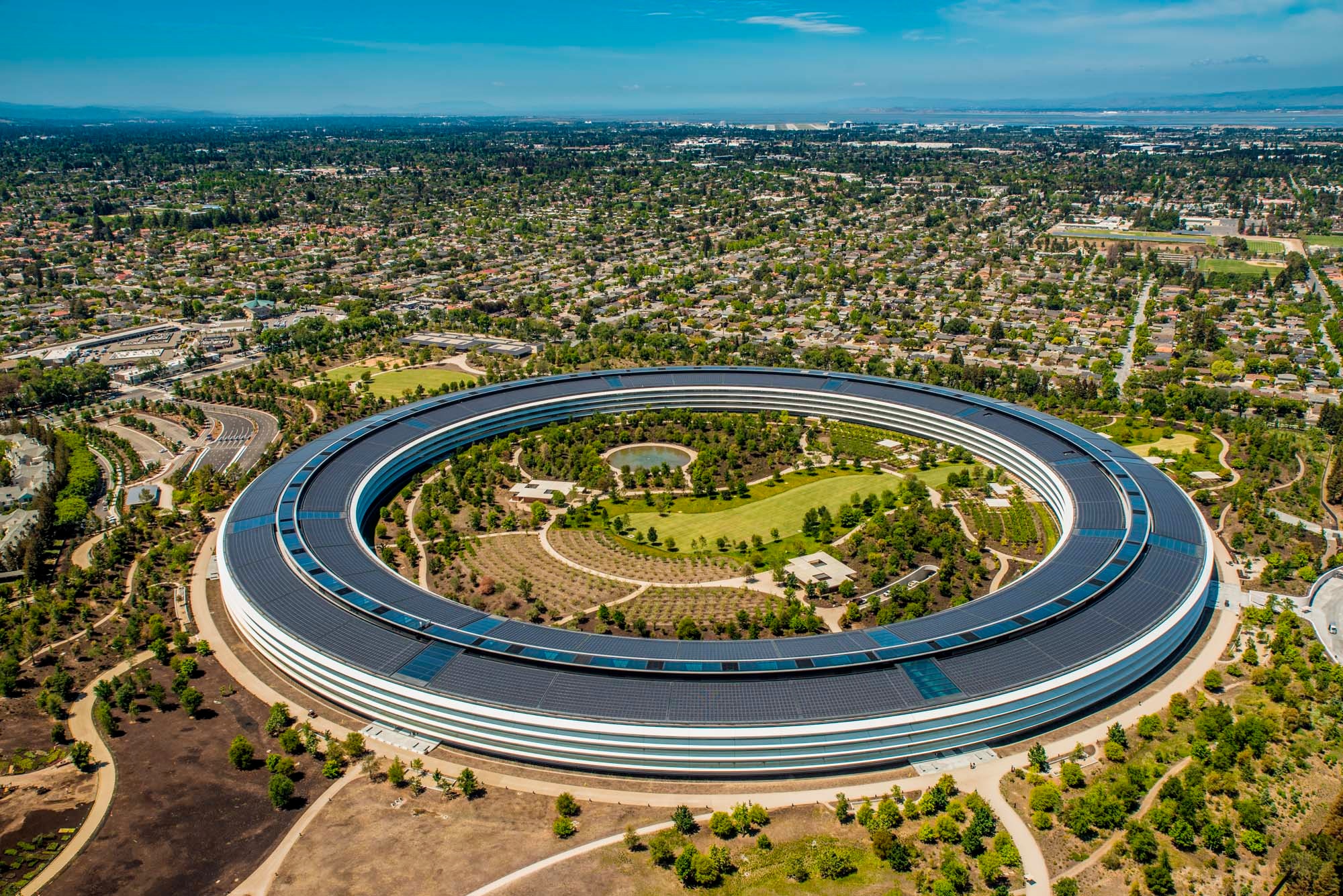
At Apple's headquarters in Cupertino, Silicon Valley, the Ring Building complements the company's existing campus buildings (Steve Jobs Theatre, the Visitor centre, cafeterias, the research and development centre, and the wellness centre, all set in a huge park) by continuing its objectives of psycho-physical wellbeing for employees and reduction of the ecological footprint. The Ring Building is a gigantic multi-storey ring 475 m in diameter with a circumference of 1,494 m, incredibly simple and intuitive in layout – like an iPhone and Mac OS device – but extremely complex and refined in technology. The circular floor plan provides a modular layout of offices of different types, each with natural light and air and expansive views of the landscape; at the eight cardinal points, the rhythm of the workspaces is interrupted by large, full-height community spaces that serve as the pivot of social life. The construction process involved one of the most advanced precast concrete structures to date, with over 4000 slabs up to 15 metres high, and the world's largest curved glass panels.The complex is entirely powered by renewable energy sources, from solar thermal to biogas and natural gas: the solar panels installed on the roof make it one of the largest solar roofs in the world. The study of cross-ventilation flows ensures that no cooling systems are used for at least nine months of the year. In the heart of the ring, the green spaces, planted with native essences among ponds and orchards, has exponentially increased the site's biodiversity.
Musée de la Romanité Narbo Via
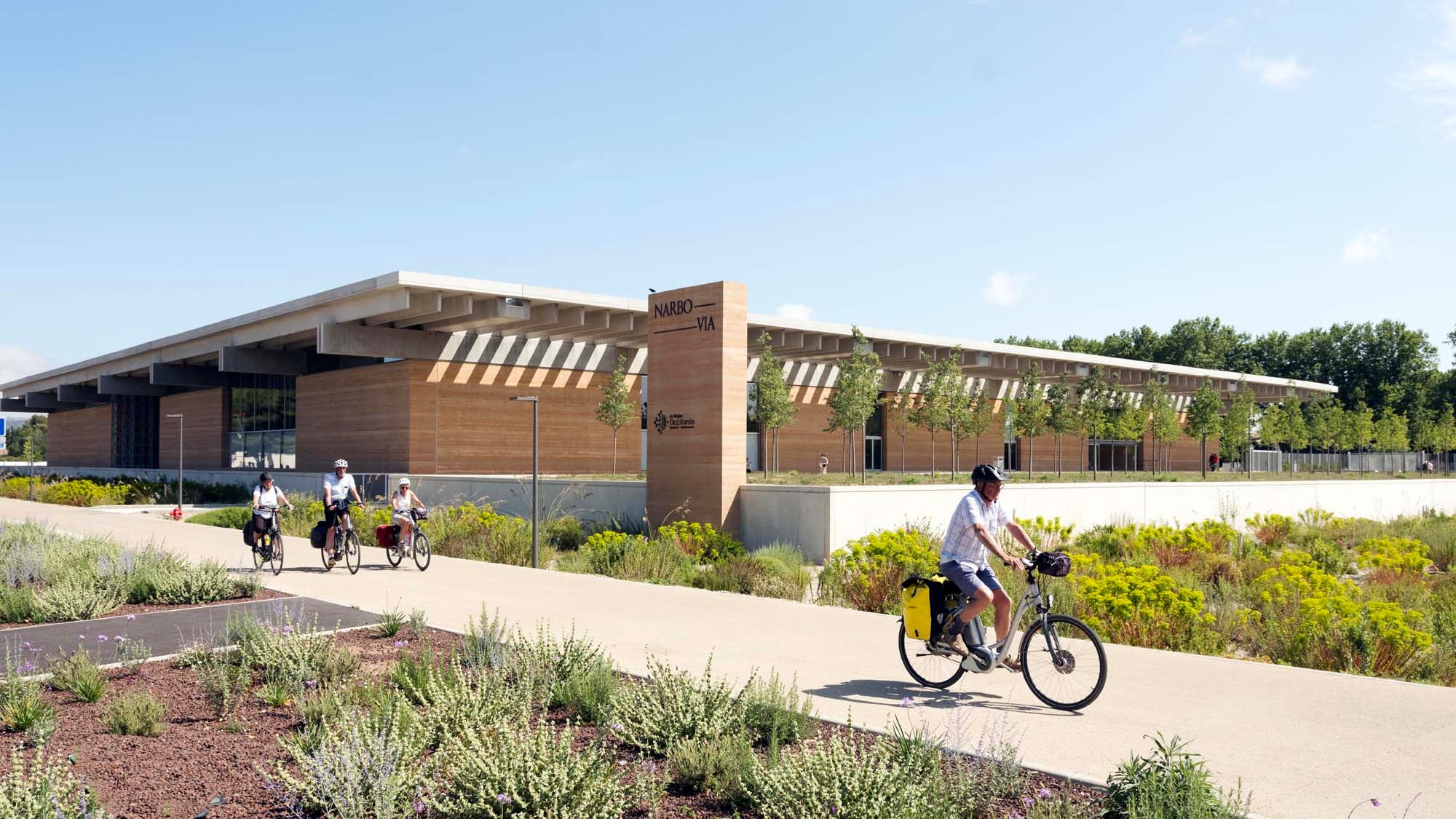
The museum rises with sober monumentality in the landscape as a temple dedicated to the Roman heritage of the city that in antiquity was a nodal point in Gallic geography.The building, placed on a podium that emphasises its solemnity, is characterised by a large projecting flat roof of exposed precast concrete, which acts as a protective and shading element. The load-bearing walls have a layered texture made of dry concrete compacted on site, reminiscent of Roman opus caementicium. The museum contains spaces for exhibitions, research, conservation and restoration of artefacts. A vertical wall running the full width of the building displays stelae and tombstones in an easily reconfigurable manner to offer active learning paths, and separates the spaces open to the public from those intended for professionals.
House of Wisdom
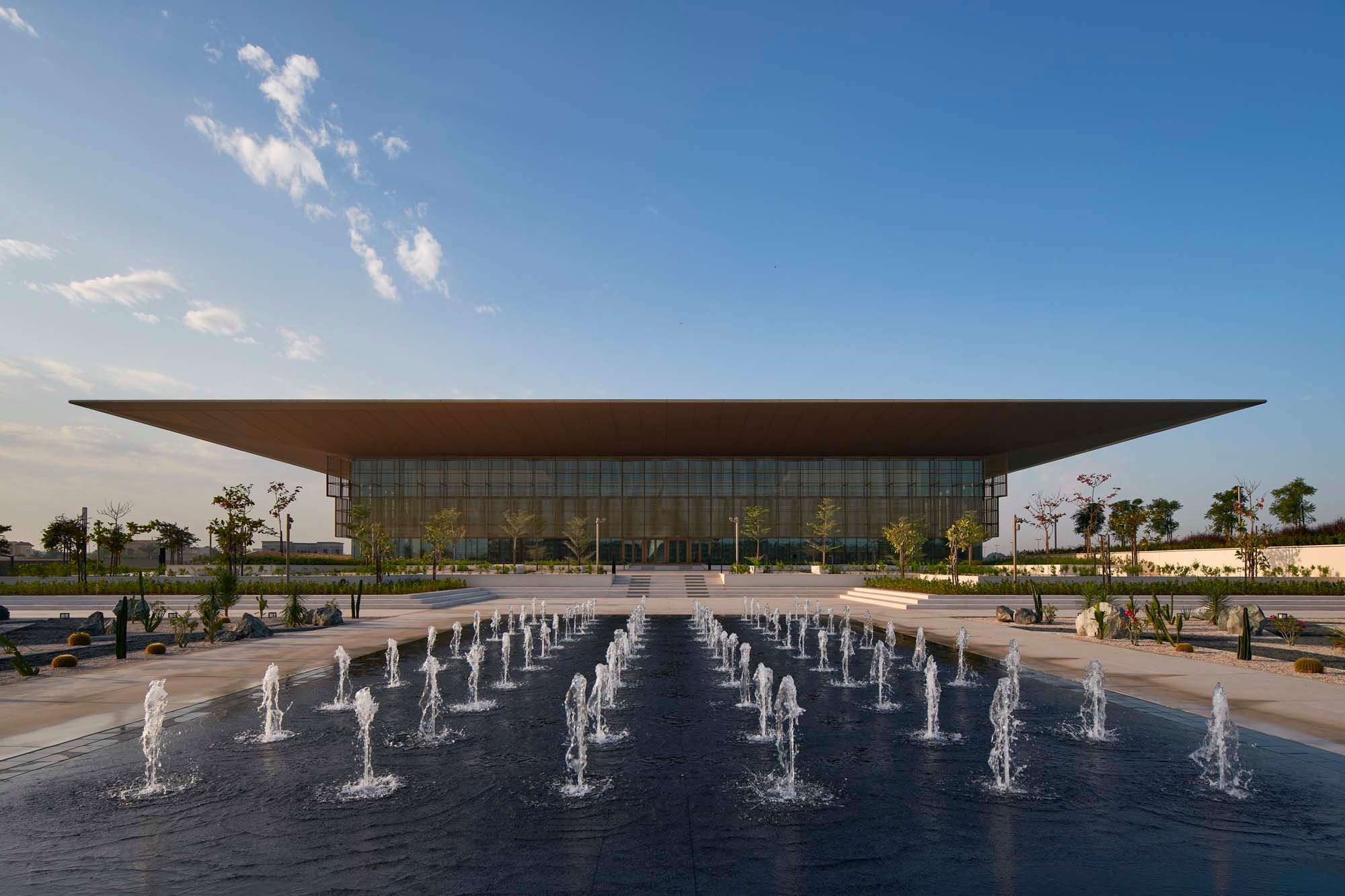
The complex, designed to celebrate Sharjah as the UNESCO World Book Capital in 2019, consists of a transparent two-storey rectilinear volume on which a 15-metre wide cantilevered roof "floats". The large overhang of the roof, together with fixed aluminium screens, shadows and filters the sun. Movable bamboo screens are used to provide privacy and control glare. The interior is characterised by an aura of lightness and brightness. On the ground floor there are exhibition spaces, a cafeteria, an educational space, an archive and a reading area; on the upper floor there are exhibition areas and reading rooms. The relationship with greenery and water, borrowed from ancient Arabian culture, revives in the garden to the south, with play areas for children, and in the garden to the north, where "The Scroll" (Gerry Judah's spiral sculpture that reinterprets the ancient Arabian prayer scrolls in a contemporary key) is located.
DJI Sky City
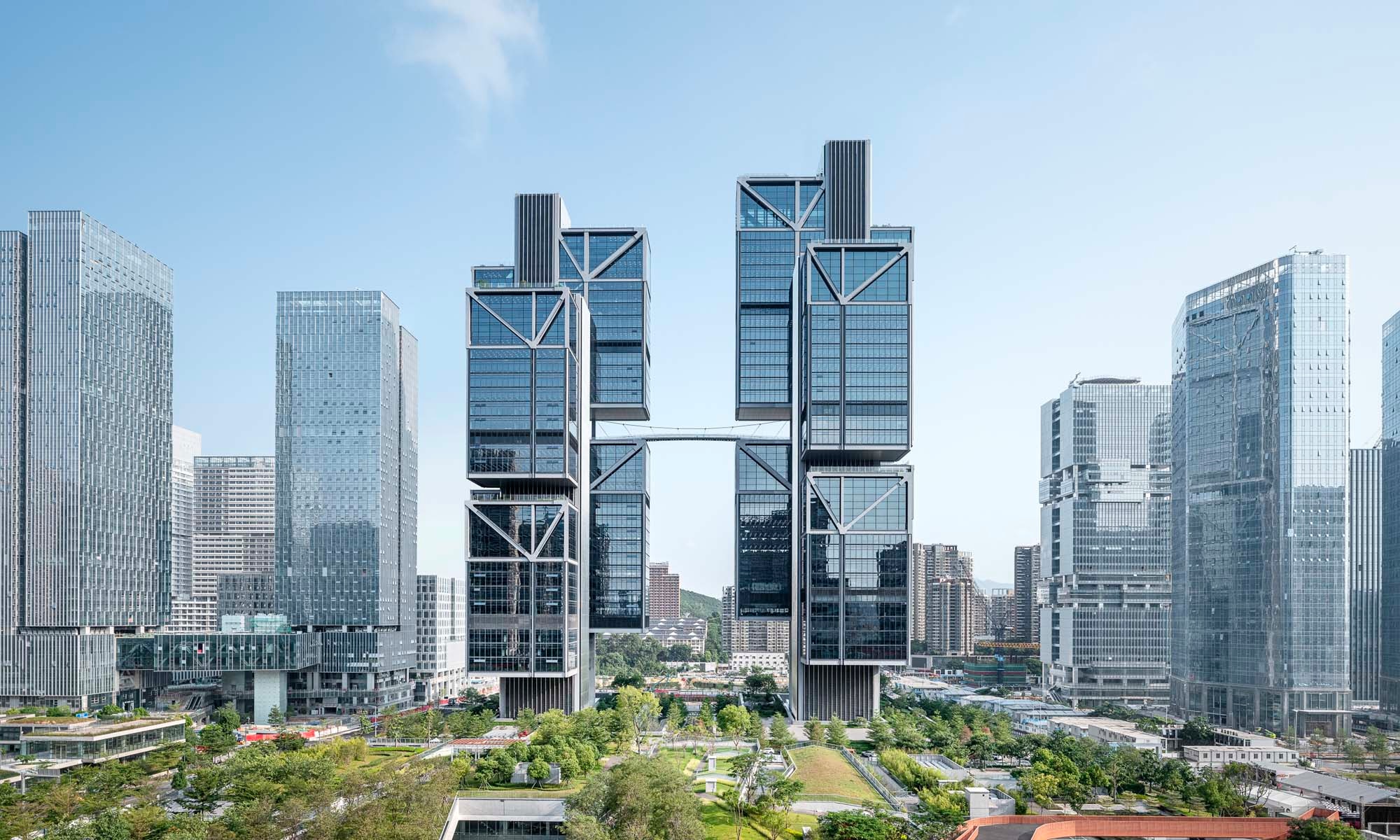
The headquarters of the Chinese technology company DJI (an acronym for Dà-Jiāng Innovations), a world giant in drone production based in Shenzhen, consists of two towers of 44 and 42 storeys, 212 m and 144 m high respectively, connected by a 90 m long suspension bridge, housing research and testing laboratories, training spaces and public spaces (health and community centre). The project explores the first application of an asymmetrical steel suspension structure in a skyscraper of this size: the work and research spaces are arranged in floating volumes cantilevered from the central cores by giant steel suspension beams and rods. This structural solution allows for maximum flexibility of the interior spaces.Particular attention is paid to microclimatic and psychological well-being and to reducing the ecological footprint: the study of the layout and orientations maximises daylight and views, improving comfort and reducing energy consumption. The green spaces, from the Zen gardens to the green roofs at the top, collect rainwater which is stored and recycled, and provide pleasant oases of rest and relations in the heart of the company.

